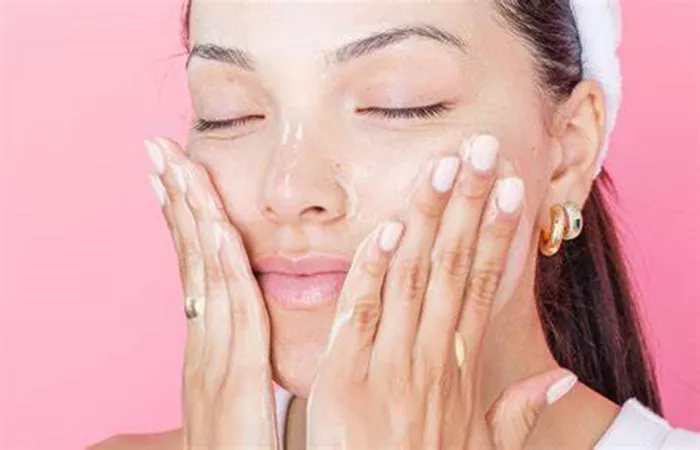A comprehensive night skincare routine is crucial for maintaining healthy, glowing skin. While daytime routines focus on protection, nighttime routines are all about repair and rejuvenation. In this article, we will explore the best night skincare routine, breaking down each step and explaining its importance.
Cleansing: The Foundation of Night Skincare
Why Cleansing is Essential
Cleansing is the cornerstone of any skincare routine. It removes makeup, dirt, oil, and impurities accumulated throughout the day. Skipping this step can lead to clogged pores, breakouts, and dull skin.
How to Choose the Right Cleanser
Skin Type: Determine your skin type (dry, oily, combination, sensitive) and choose a cleanser that caters to your specific needs.
Ingredients: Look for gentle, non-comedogenic ingredients that cleanse without stripping the skin’s natural oils.
Formulation: Gel cleansers are great for oily skin, cream cleansers for dry skin, and micellar water for sensitive skin.
Cleansing Technique
Double Cleansing: Start with an oil-based cleanser to remove makeup and sunscreen, followed by a water-based cleanser to clean the skin.
Massage: Use gentle, circular motions to massage the cleanser into your skin for about 60 seconds.
Rinse: Use lukewarm water to rinse off the cleanser thoroughly.
Exfoliation: Unclogging and Smoothing
Why Exfoliate at Night?
Exfoliation removes dead skin cells, allowing your skin to regenerate and absorb other skincare products more effectively. Doing this at night helps prevent photosensitivity and allows the skin to heal while you sleep.
Types of Exfoliants
Physical Exfoliants: Scrubs with small, granular particles. Use sparingly to avoid micro-tears in the skin.
Chemical Exfoliants: Products with AHAs (alpha hydroxy acids), BHAs (beta hydroxy acids), or enzymes that dissolve dead skin cells.
How Often to Exfoliate
Sensitive Skin: Once a week.
Normal Skin: 2-3 times a week.
Oily Skin: 3-4 times a week.
Exfoliation Technique
Apply: Use a small amount of exfoliant and apply it to damp skin.
Massage: Gently massage in circular motions for about 30 seconds.
Rinse: Thoroughly rinse with lukewarm water.
See Also: What are the 3 most important skin care products?
Toning: Prepping the Skin
The Purpose of a Toner
Toners balance the skin’s pH, remove any residual impurities, and prepare the skin for better absorption of subsequent products.
Choosing the Right Toner
Hydrating Toners: Ideal for dry and sensitive skin.
Clarifying Toners: Best for oily and acne-prone skin.
Exfoliating Toners: Contain mild acids for additional exfoliation.
Application Technique
Apply: Pour a small amount onto a cotton pad or directly into your hands.
Pat: Gently pat the toner onto your face and neck.
Absorb: Allow the toner to absorb fully before moving to the next step.
Serums: Targeted Treatments
The Role of Serums
Serums are concentrated treatments that address specific skin concerns such as aging, hyperpigmentation, or dehydration. They are packed with active ingredients that penetrate deeply into the skin.
Choosing the Right Serum
Vitamin C: Brightens and evens out skin tone.
Hyaluronic Acid: Hydrates and plumps the skin.
Retinol: Promotes cell turnover and reduces signs of aging.
Niacinamide: Reduces inflammation and improves skin elasticity.
Application Technique
Apply: Use a few drops of serum and apply it to your face and neck.
Pat: Gently pat the serum into your skin until fully absorbed.
Moisturizing: Locking in Hydration
Importance of Moisturizing
Moisturizers seal in moisture, strengthen the skin barrier, and ensure that the active ingredients in your serum are locked in. They prevent water loss and keep the skin hydrated throughout the night.
Choosing the Right Moisturizer
Gel Moisturizers: Lightweight and suitable for oily skin.
Cream Moisturizers: Rich and nourishing for dry skin.
Lotion Moisturizers: Suitable for normal and combination skin.
Application Technique
Apply: Take a pea-sized amount of moisturizer and dot it on your forehead, cheeks, nose, and chin.
Massage: Gently massage the moisturizer into your skin using upward strokes.
Eye Cream: Special Care for the Delicate Area
Why Use Eye Cream?
The skin around the eyes is thinner and more prone to dryness and wrinkles. Eye creams are formulated to address concerns like puffiness, dark circles, and fine lines.
Choosing the Right Eye Cream
Hydrating Eye Creams: Contain hyaluronic acid and peptides.
Brightening Eye Creams: Include ingredients like vitamin C and caffeine.
Anti-aging Eye Creams: Formulated with retinol and antioxidants.
Application Technique
Apply: Use a small amount of eye cream and dot it around the orbital bone.
Pat: Gently pat the cream into the skin using your ring finger to avoid applying too much pressure.
Spot Treatments: Targeting Specific Issues
Purpose of Spot Treatments
Spot treatments are designed to target specific skin issues like acne, dark spots, or hyperpigmentation. They contain higher concentrations of active ingredients to treat these concerns directly.
Choosing the Right Spot Treatment
Acne Spot Treatments: Contain benzoyl peroxide or salicylic acid.
Dark Spot Treatments: Formulated with ingredients like hydroquinone or niacinamide.
Application Technique
Apply: Use a small amount of the spot treatment and apply it directly to the affected area.
Pat: Gently pat the product into the skin.
Overnight Masks: Intensive Hydration and Repair
Benefits of Overnight Masks
Overnight masks provide intense hydration and repair while you sleep. They create a barrier that locks in moisture and allows active ingredients to penetrate deeply.
Choosing the Right Overnight Mask
Hydrating Masks: Contain ingredients like hyaluronic acid and glycerin.
Brightening Masks: Include vitamin C and niacinamide.
Anti-aging Masks: Formulated with retinol and peptides.
Application Technique
Apply: Apply a generous layer of the mask over your moisturizer.
Massage: Gently massage it into your skin until it is absorbed.
Sleep: Leave the mask on overnight and rinse off in the morning.
Lip Care: Nourishing and Hydrating
Importance of Lip Care
Lips are prone to dryness and chapping. Applying a nourishing lip balm at night ensures they stay hydrated and smooth.
Choosing the Right Lip Balm
Hydrating Lip Balms: Contain ingredients like shea butter and beeswax.
Repairing Lip Balms: Include ingredients like lanolin and ceramides.
Application Technique
Apply: Apply a generous layer of lip balm before going to bed.
Massage: Gently massage it into your lips for even coverage.
Additional Tips for an Effective Night Skincare Routine
Consistency is Key
Stick to Your Routine: Consistency is crucial for seeing long-term results. Make your night skincare routine a non-negotiable part of your daily regimen.
Get Enough Sleep
Beauty Sleep: Aim for 7-9 hours of quality sleep each night to allow your skin to repair and regenerate.
Stay Hydrated
Drink Water: Hydrate your skin from the inside out by drinking plenty of water throughout the day.
Healthy Diet
Eat Well: Consume a balanced diet rich in antioxidants, vitamins, and minerals to support healthy skin.
Stress Management
Reduce Stress: Practice stress-relieving activities like yoga, meditation, or deep breathing to keep your skin looking its best.
Conclusion
A well-rounded night skincare routine is essential for maintaining healthy, youthful skin. By following these steps—cleansing, exfoliating, toning, applying serums, moisturizing, using eye cream, spot treatments, overnight masks, and lip care—you can ensure your skin gets the nourishment and care it needs while you sleep. Remember, consistency and a holistic approach to skincare and overall well-being are key to achieving radiant, glowing skin.
[inline_related_posts title=”You Might Be Interested In” title_align=”left” style=”list” number=”6″ align=”none” ids=”10929,5286,5060″ by=”categories” orderby=”rand” order=”DESC” hide_thumb=”no” thumb_right=”no” views=”no” date=”yes” grid_columns=”2″ post_type=”” tax=””]

































